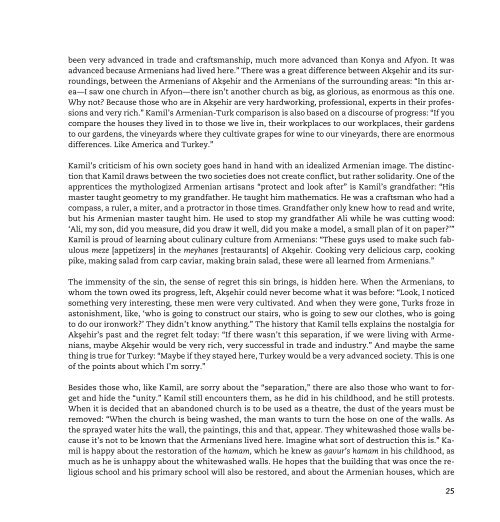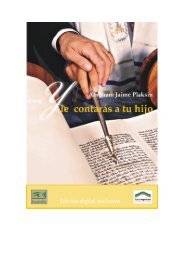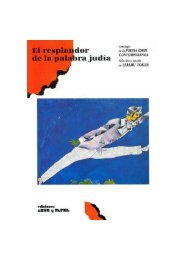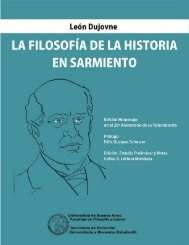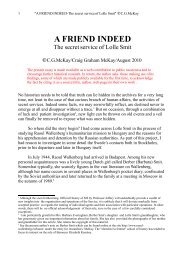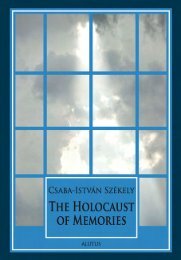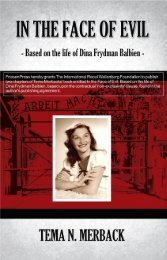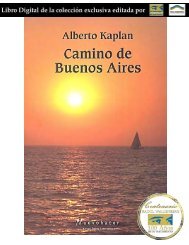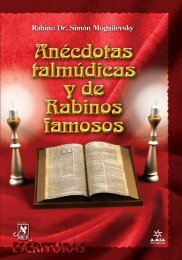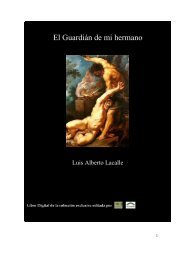Speaking to One Another - The International Raoul Wallenberg ...
Speaking to One Another - The International Raoul Wallenberg ...
Speaking to One Another - The International Raoul Wallenberg ...
- No tags were found...
You also want an ePaper? Increase the reach of your titles
YUMPU automatically turns print PDFs into web optimized ePapers that Google loves.
een very advanced in trade and craftsmanship, much more advanced than Konya and Afyon. It wasadvanced because Armenians had lived here.” <strong>The</strong>re was a great difference between Akşehir and its surroundings,between the Armenians of Akşehir and the Armenians of the surrounding areas: “In this area—Isaw one church in Afyon—there isn’t another church as big, as glorious, as enormous as this one.Why not? Because those who are in Akşehir are very hardworking, professional, experts in their professionsand very rich.” Kamil’s Armenian-Turk comparison is also based on a discourse of progress: “If youcompare the houses they lived in <strong>to</strong> those we live in, their workplaces <strong>to</strong> our workplaces, their gardens<strong>to</strong> our gardens, the vineyards where they cultivate grapes for wine <strong>to</strong> our vineyards, there are enormousdifferences. Like America and Turkey.”Kamil’s criticism of his own society goes hand in hand with an idealized Armenian image. <strong>The</strong> distinctionthat Kamil draws between the two societies does not create conflict, but rather solidarity. <strong>One</strong> of theapprentices the mythologized Armenian artisans “protect and look after” is Kamil’s grandfather: “Hismaster taught geometry <strong>to</strong> my grandfather. He taught him mathematics. He was a craftsman who had acompass, a ruler, a miter, and a protrac<strong>to</strong>r in those times. Grandfather only knew how <strong>to</strong> read and write,but his Armenian master taught him. He used <strong>to</strong> s<strong>to</strong>p my grandfather Ali while he was cutting wood:‘Ali, my son, did you measure, did you draw it well, did you make a model, a small plan of it on paper?’”Kamil is proud of learning about culinary culture from Armenians: “<strong>The</strong>se guys used <strong>to</strong> make such fabulousmeze [appetizers] in the meyhanes [restaurants] of Akşehir. Cooking very delicious carp, cookingpike, making salad from carp caviar, making brain salad, these were all learned from Armenians.”<strong>The</strong> immensity of the sin, the sense of regret this sin brings, is hidden here. When the Armenians, <strong>to</strong>whom the <strong>to</strong>wn owed its progress, left, Akşehir could never become what it was before: “Look, I noticedsomething very interesting, these men were very cultivated. And when they were gone, Turks froze inas<strong>to</strong>nishment, like, ‘who is going <strong>to</strong> construct our stairs, who is going <strong>to</strong> sew our clothes, who is going<strong>to</strong> do our ironwork?’ <strong>The</strong>y didn’t know anything.” <strong>The</strong> his<strong>to</strong>ry that Kamil tells explains the nostalgia forAkşehir’s past and the regret felt <strong>to</strong>day: “If there wasn’t this separation, if we were living with Armenians,maybe Akşehir would be very rich, very successful in trade and industry.” And maybe the samething is true for Turkey: “Maybe if they stayed here, Turkey would be a very advanced society. This is oneof the points about which I’m sorry.”Besides those who, like Kamil, are sorry about the “separation,” there are also those who want <strong>to</strong> forgetand hide the “unity.” Kamil still encounters them, as he did in his childhood, and he still protests.When it is decided that an abandoned church is <strong>to</strong> be used as a theatre, the dust of the years must beremoved: “When the church is being washed, the man wants <strong>to</strong> turn the hose on one of the walls. Asthe sprayed water hits the wall, the paintings, this and that, appear. <strong>The</strong>y whitewashed those walls becauseit’s not <strong>to</strong> be known that the Armenians lived here. Imagine what sort of destruction this is.” Kamilis happy about the res<strong>to</strong>ration of the hamam, which he knew as gavur’s hamam in his childhood, asmuch as he is unhappy about the whitewashed walls. He hopes that the building that was once the religiousschool and his primary school will also be res<strong>to</strong>red, and about the Armenian houses, which are25


